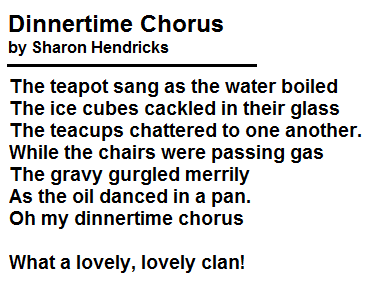Poetry has the unique ability to breathe life into the lifeless, transforming the inanimate into something vivid, emotional, and relatable. One of the most effective literary devices poets use to achieve this is personification—the technique of attributing human qualities, emotions, or actions to non-human entities.
Personification allows poets to:
- Create emotionally resonant imagery.
- Strengthen themes and moods.
- Develop unique perspectives on the world.
Whether it’s the whispering wind, the angry sea, or the smiling moon, personification helps paint a more imaginative and expressive picture of reality. In this article, we’ll explore:
- The definition and function of personification.
- Famous examples of personification in poetry.
- Techniques for using personification effectively.
- How poets can experiment with personification to enhance their work.
What is Personification? A Definition

Personification is a figure of speech in which human traits or actions are given to objects, animals, ideas, or natural forces. By doing this, poets create a deeper connection between the reader and the subject, making abstract concepts more relatable.
Example: “The sun smiled down upon us.”
➡ The sun, which is an inanimate object, is described as “smiling,” a human action, giving it warmth and friendliness.
Example: “The leaves danced in the wind.”
➡ Leaves cannot literally dance, but this personification creates an image of movement and liveliness.
📌 Why Do Poets Use Personification?
- It adds emotion and depth to imagery.
- It makes abstract ideas more concrete.
- It allows for unique interpretations of nature and objects.
- It helps convey themes and moods more powerfully.
Famous Examples of Personification in Poetry
Throughout literary history, poets have used personification to bring their words to life. Here are a few famous examples:
1. “I Wandered Lonely as a Cloud” by William Wordsworth
“The waves beside them danced; but they
Out-did the sparkling waves in glee:”
Analysis: Here, the waves are “dancing” and feeling “glee”, portraying nature as joyful and lively. Wordsworth often used personification to capture the beauty of the natural world in human-like terms.
2. “Because I Could Not Stop for Death” by Emily Dickinson
“Because I could not stop for Death –
He kindly stopped for me –”
Analysis: Dickinson personifies Death as a gentleman who arrives in a carriage to escort the speaker. This personification softens the idea of death, making it seem gentle rather than frightening.
3. “Fog” by Carl Sandburg
“The fog comes
on little cat feet.
It sits looking
over harbor and city
on silent haunches
and then moves on.”
Analysis: The fog is compared to a stealthy cat, moving with quiet grace. This personification makes the natural phenomenon feel alive, almost like a mysterious observer.
4. “Two Sunflowers Move in the Yellow Room” by William Blake
“Ah, William, we’re weary of weather,”
Said the sunflowers, shining with dew.”
Analysis: The sunflowers are given voices, expressing exhaustion. This gives the flowers a sense of consciousness, making them relatable and almost human-like.
Techniques for Using Personification in Poetry
If you’re a poet looking to enhance your writing with personification, here are some effective techniques:
1. Observe and Imagine
Look at everyday objects or natural elements and ask:
- If this object had emotions, what would it feel?
- If it could talk, what would it say?
- How would it move if it were alive?
📌 Example: Instead of saying, “The wind was strong,”
say “The wind howled through the trees like a lonely wolf.”
2. Match Actions to Emotions
Pair an inanimate object with a human action that fits its essence.
📌 Example:
Instead of “The fire was bright,”
say “The flames danced wildly, hungry for more.”
This conveys movement, desire, and intensity, making the fire feel alive.
3. Use Sensory Details
Combine sight, sound, touch, taste, and smell with human-like descriptions.
📌 Example:
Instead of “The trees moved in the wind,”
say “The ancient trees whispered secrets as the wind caressed their gnarled branches.”
This enhances the mystical quality of the trees, adding depth to the scene.
4. Make Abstract Concepts Feel Real
Personification can help bring emotions and ideas to life.
📌 Example:
Instead of “Fear gripped me,”
say “Fear wrapped its icy fingers around my heart.”
This makes the emotion tangible and intense, strengthening its impact on the reader.
Experimenting with Personification: Writing Exercises
If you’re looking to practice using personification in your poetry, try these exercises:
Exercise 1: Giving Objects a Voice
Choose an everyday object (a chair, clock, lamp) and write a short poem where it “speaks” about its life.
📌 Example Prompt:
“I am an old clock, forgotten in the attic…”
Exercise 2: Weather with a Personality
Describe the weather using personification.
📌 Example Prompt:
“The storm growled angrily, throwing fists of rain against the windows…”
Exercise 3: Abstract Feelings as Characters
Describe an emotion as if it were a person.
📌 Example Prompt:
“Loneliness knocked on my door, wrapped in a tattered coat…”
How Personification Enhances Themes in Poetry
Beyond imagery, personification can reinforce themes and deepen meaning in poetry.
Time Passing
- “Time tiptoed past me while I wasn’t looking.”
➡ Time is depicted as sneaky, reinforcing the idea of fleeting moments.
Love and Longing
- “The moon peeked through my window, a silent witness to my loneliness.”
➡ The moon becomes a companion to emotions, enhancing the theme of longing.
Nature’s Power
- “The river carved its will into the stone, relentless and patient.”
➡ The river is given persistence, symbolizing nature’s unstoppable force.
Conclusion: The Beauty of Personification in Poetry
Personification is one of the most powerful poetic devices, allowing writers to transform ordinary descriptions into emotionally rich imagery. By attributing human qualities to objects, nature, or abstract concepts, poets create more engaging, relatable, and thought-provoking works.
Whether subtle or bold, personification breathes life into poetry knowledge, making readers see the world in a new way. So next time you write, ask yourself—what secret emotions might the wind, the stars, or the sea be holding?
📌 What’s your favorite example of personification in poetry? Share your thoughts below! ✍️🌿








